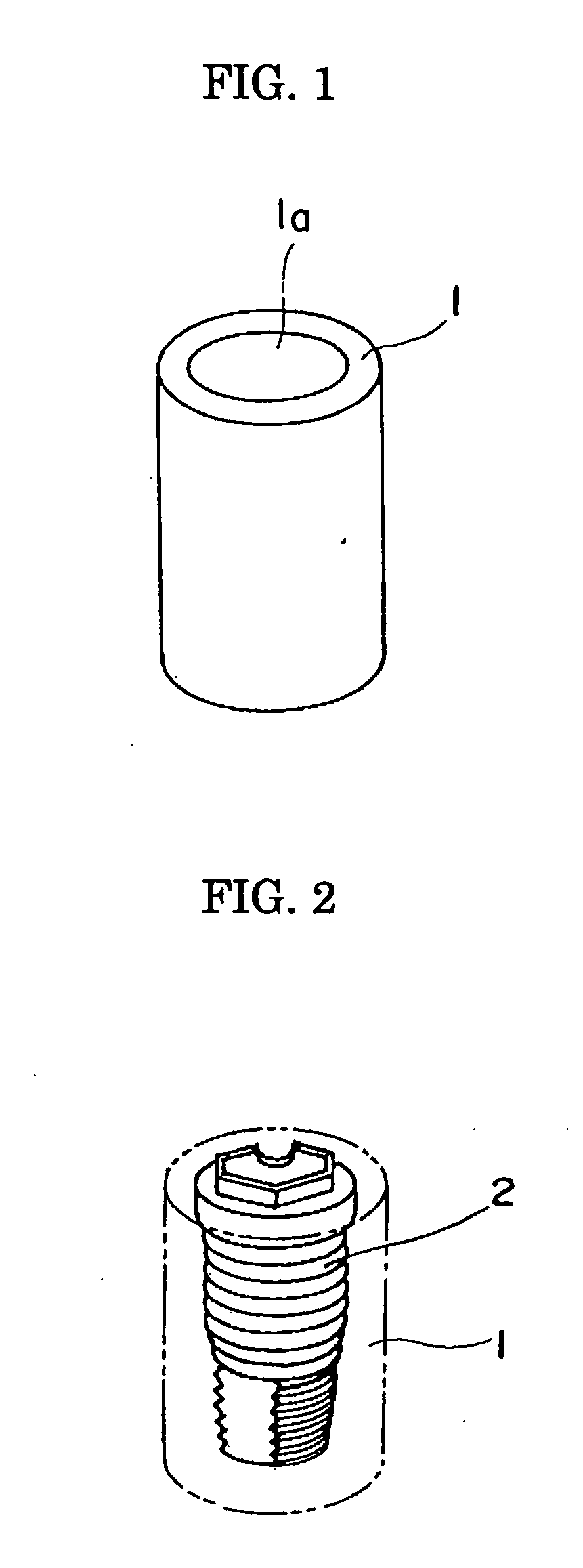Method for fixing an implant, fixing member for the implant and implant composite
a technology for fixing members and implants, applied in the field of methods for fixing implants, fixing members for implants and implants, can solve the problems of difficult implant tooth inserting with a condition, inability to stimulate alveolar bone, absorbing and thinning, etc., and achieves the effects of simplifying medical treatment, saving operation, and reducing the number of procedures
- Summary
- Abstract
- Description
- Claims
- Application Information
AI Technical Summary
Benefits of technology
Problems solved by technology
Method used
Image
Examples
Embodiment Construction
[0037] Preferred embodiments of the present invention will hereinafter be described in detail with reference to the attached drawings.
[0038] The present invention provides a method for fixing an implant comprising steps of inserting a ceramics porous article consisting essentially of a hydroxyapatite into an implant insertion site of an alveolar bone or a gnathic bone reinforcing an own bone, and further inserting the implant into the own bone.
[0039] In the present invention, the ceramics porous article may further comprises other calcium phosphate based ceramics such as tricalcium phosphate (TCP), etc. Further, it usually takes at least one week and up to about twelve months to augment patients' own bone tissue.
[0040] Hydroxyapatite is main composition of bone, comparatively superior in mechanical strength and so on, and is a material that is suitably superior in biocompatibility. Moreover, it also has features that a lapse of several years makes it being absorbed by degrees int...
PUM
| Property | Measurement | Unit |
|---|---|---|
| porosity | aaaaa | aaaaa |
| porosity | aaaaa | aaaaa |
| porosity | aaaaa | aaaaa |
Abstract
Description
Claims
Application Information
 Login to View More
Login to View More - R&D
- Intellectual Property
- Life Sciences
- Materials
- Tech Scout
- Unparalleled Data Quality
- Higher Quality Content
- 60% Fewer Hallucinations
Browse by: Latest US Patents, China's latest patents, Technical Efficacy Thesaurus, Application Domain, Technology Topic, Popular Technical Reports.
© 2025 PatSnap. All rights reserved.Legal|Privacy policy|Modern Slavery Act Transparency Statement|Sitemap|About US| Contact US: help@patsnap.com



